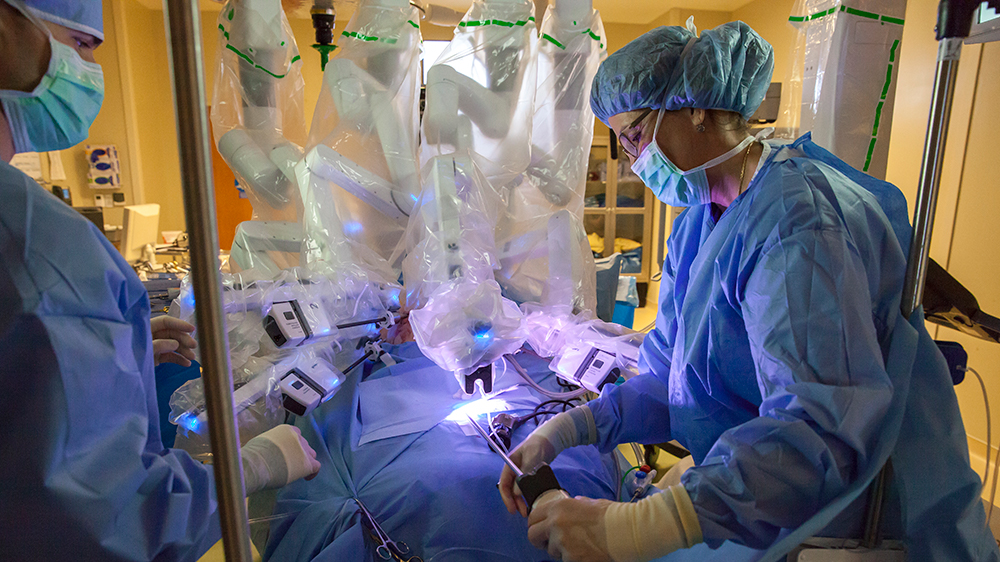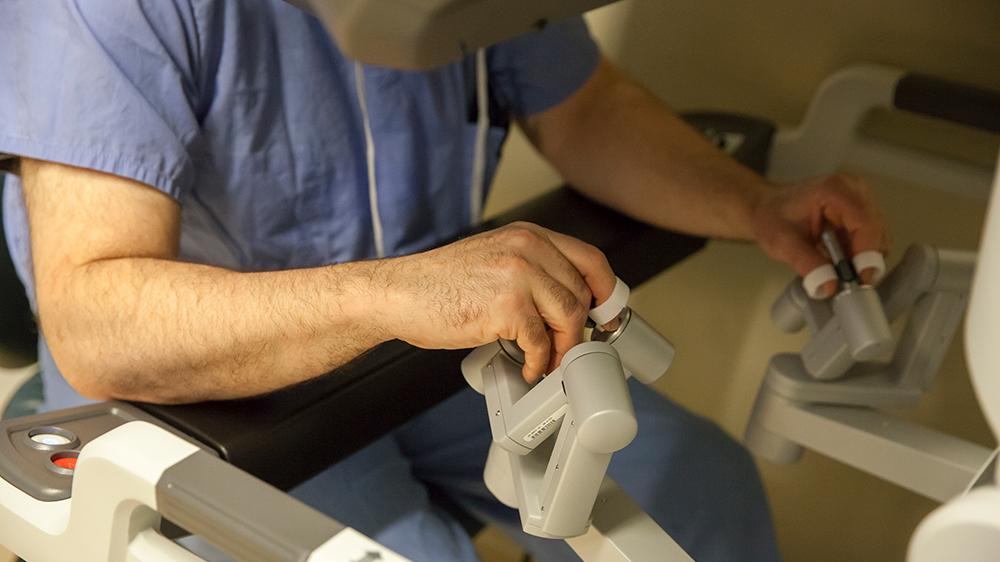What Is Minimally Invasive Surgery?
August 20, 2020
Categories: Health Conditions, Surgical Services
If your doctor tells you that you need to have surgery, it can be a scary and confusing time. While it’s natural to feel anxious about a surgical procedure, the truth is that surgical techniques have evolved dramatically. Many surgeries today are what’s known as minimally invasive surgery.
Minimally Invasive Surgery vs. Open Surgery
You may be most familiar with traditional surgeries you’ve seen on television or in the movies that involve making large incisions with a scalpel. These are known as open surgeries. In open surgery, surgeons make a large cut of the skin and tissue in order to have a full view of the organs they’re working on.
Minimally invasive surgery is a modern surgical technique that does not require a large incision. Surgeons make tiny cuts in the body and perform the procedure using small, specialized instruments, including a tiny video to see the organs they’re working on.
The benefits of minimally invasive surgery are many. Because the technique does not require a large incision, minimally invasive surgery means faster recovery time, shorter hospital stays, reduced pain, fewer complications and less noticeable scars.
What is Robotic Surgery?

Robotic surgery is a minimally invasive technique that many physicians use to perform procedures. It is a form of laparoscopic surgery and also is known as robotic-assisted surgery, recognizable because the technology has what looks like several robotic arms.
Robotic surgery allows surgeons to perform delicate and complex procedures that would be difficult or impossible without the use of a computer. Instead of making cuts in a patient’s body using their own hands, surgeons make tiny cuts and perform the procedure using very small tools attached to a robot arm.
Surgeons control the robot using a computer. They are typically seated at a computer console where they are able to view 3-D images of the surgical area that are highly magnified. The surgeons are in complete control of the procedure, but the computer helps them maneuver their instruments.
All robotic surgeries are minimally invasive, so the benefits are similar: faster recovery, fewer complications, reduced pain and less noticeable scars.
Robotic Surgery Procedures
Robotic surgery can be used to treat a variety of conditions including:
- Many types of cancer including lung, colorectal, gynecologic, kidney and prostate cancers
- Acid reflux
- Diverticulitis
- Fecal incontinence
- Fibroids
- Gallbladder
- Hernias
- Hysterectomy
- Myasthenia gravis
- Ovarian cysts
- Pelvic organ prolapse
- Ulcerative colitis
Holy Cross Health was an early adopter of this revolutionary technology in 2008, and Holy Cross Germantown Hospital was the first community hospital in Montgomery County to offer the latest da Vinci Xi robot in 2017. Today, our robotics program has more than 30 robotics-trained surgeons in these specialty areas and is continuing to add more:
- Colorectal surgery
- Thoracic surgery
- General surgery
- Gynecologic and gynecologic oncology surgery
- Urogynecologic (pelvic health) surgery
- Urological surgery
View the full list of robotic surgery procedures we perform.
Resources

Minimally Invasive Expertise

Prepare for Your Surgery
Holy Cross Health presents the information in this blog as a resource for our community. It is not intended to replace professional medical advice or to endorse any particular entity or service. Personal health problems should be brought to the attention of the appropriate health professionals.
